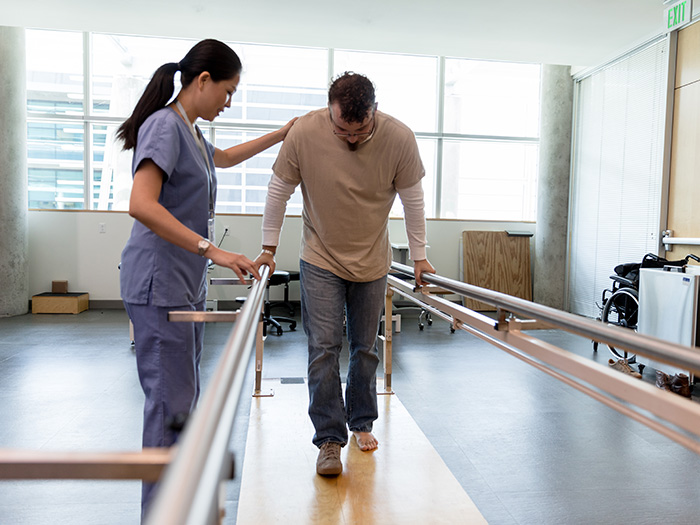Hurricane Aftermath
Post-Disaster Impact on Workers’ Comp a Mixed Bag

In Houston, a region pummeled by Hurricane Harvey in late August, a massive cleanup is underway. The work will take time, and it presents significant risks for the workers tasked with setting things right.
Ben Gonzalez, spokesperson for the Texas Department of Insurance, will not speculate on the frequency of workers’ comp claims or rates following the disaster. But he said the hurricane has presented serious health and safety hazards for those working on recovery and cleanup.
Those dangers, he said, range from fall and lifting hazards to cuts and lacerations to bites from snakes and insects. He also said that standing flood water poses risks such as exposure to infectious disease, chemicals and accidental electrocutions — all of which have been widely reported by the media.
“Even if extensive damage did not occur at a particular location, worksite conditions may have changed and employees may be doing work outside their regular duties as the try to get businesses ready to open,” he said. This creates potential hazards if businesses fail to take sufficient time to assess the environment and make sure employees have proper training and safety equipment, Gonzalez said.
Travis Vance, counsel in the Charlotte, N.C., office of Fisher Phillips, said it’s not unusual to have a spike in workers’ comp claims and costs after a disaster because employers use their own workers for cleanup instead of hiring a remediation company — a mistake that he has seen lead to insurance payouts in the millions of dollars.
He predicts the scale of the disaster left by Harvey and Irma will cause workers’ comp claims in Texas and Florida to jump by 15 to 20 percent in the next year.
But while many assume rates will spike following a natural disaster, records from past events suggest results can be difficult to predict.
It’s not unusual to have a spike in workers’ comp claims and costs after a disaster because employers use their own workers for cleanup instead of hiring a remediation company.
Workers’ comp rates in Louisiana spiked following the devastation left by Hurricane Katrina in 2005, while other states have reported flat rates and even declines in workers’ comp claims following natural disasters like hurricanes and flooding.
In Louisiana in 2006, a year after Katrina, the state reported a 38 percent increase in the number of workers’ comp claims processed.
But the most recent workers’ comp figures in the state so far do not show a spike in claims as a result of the August 2016 floods that decimated approximately more than 150,000 homes and businesses in the Baton Rouge area.
The state’s year-end 2016 figures actually showed a dip in claims, as well as workers’ comp insurance rates, which have dropped consistently from 2013 to 2016.
At Baton Rouge-based LUBA workers’ comp, a casualty insurance company, the company saw firsthand how post-disaster cleanup could affect workers’ comp since its own offices were under water.
But rather than seeing a jump, the company saw a slight decrease in claims in the year following the floods. Mike DePaul, LUBA’s chief operating officer, said that, in his company’s experience, people were so “focused and mission-driven” during cleanup efforts that the type of careless accidents that can happen to distracted workers just didn’t occur.
Another theory is with so much clean-up work available and people working together to rebuild, there’s less likelihood of employees filing fraudulent claims.
In 2012, Hurricane Sandy’s hit on New Jersey caused an estimated $30 billion in damage. However, according to Karla Bardinas, a spokesperson for the New Jersey Department of Labor and Workforce Development, total workers’ comp filings after Sandy — in 2012, 2013 and 2014 — actually declined compared to 2011.
The Cambridge, Mass.-based Workers’ Compensation Research Institute found in its post-Katrina research that immediately after the hurricane, there was a dip in medical costs per claim in the New Orleans area, most likely due to a disruption in medical care. The state also saw a decline in the duration of temporary disability after the disasters mainly concentrated in hurricane-affected areas.
Regardless of whether Texas and Florida see rates jump like Katrina or remain flat and drop like they did in post-Sandy New Jersey, Vance said employers and insurers alike should not be complacent, and precautions should be taken to protect workers returning to workplaces that may be in less-than-optimal condition.










